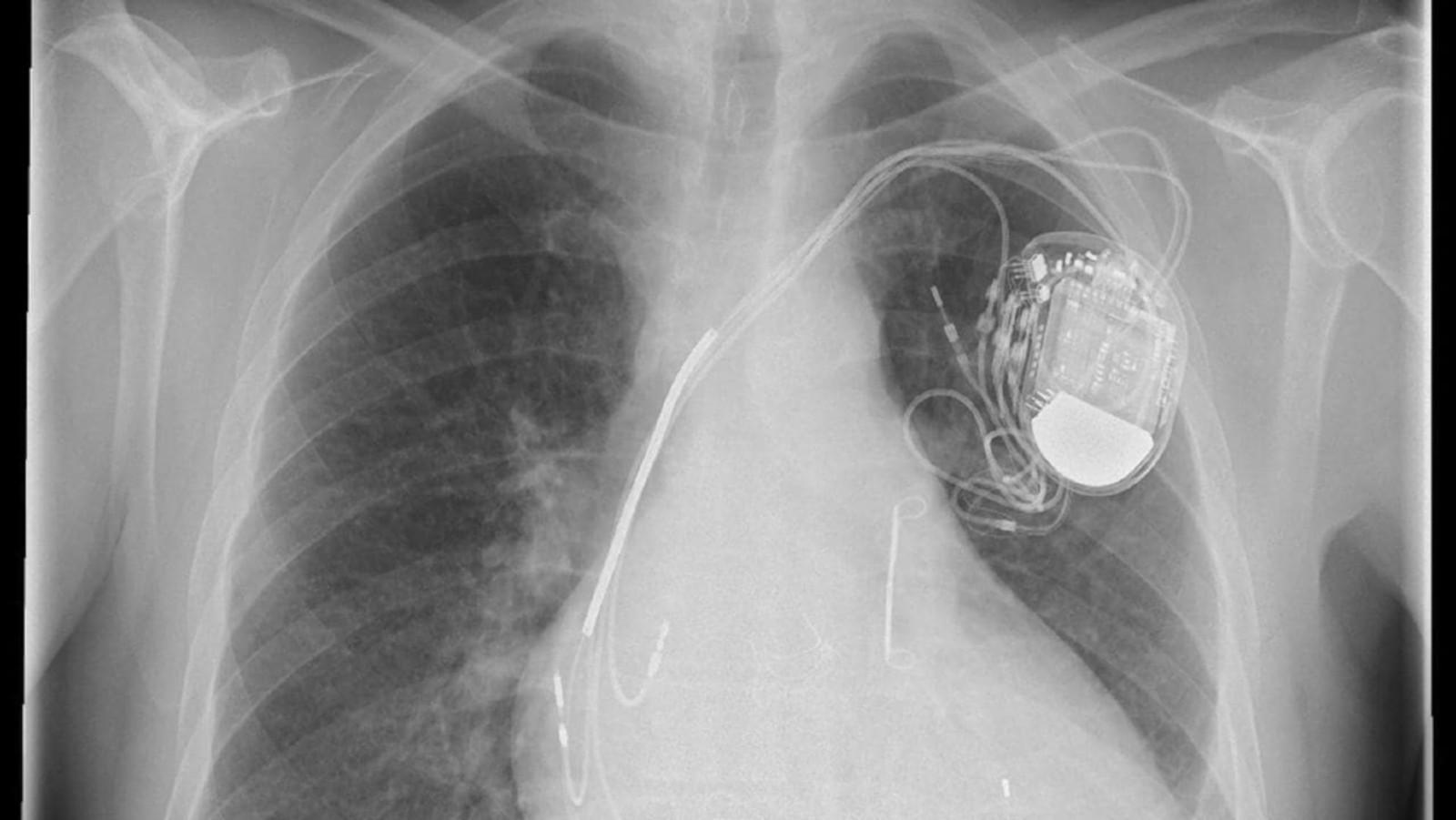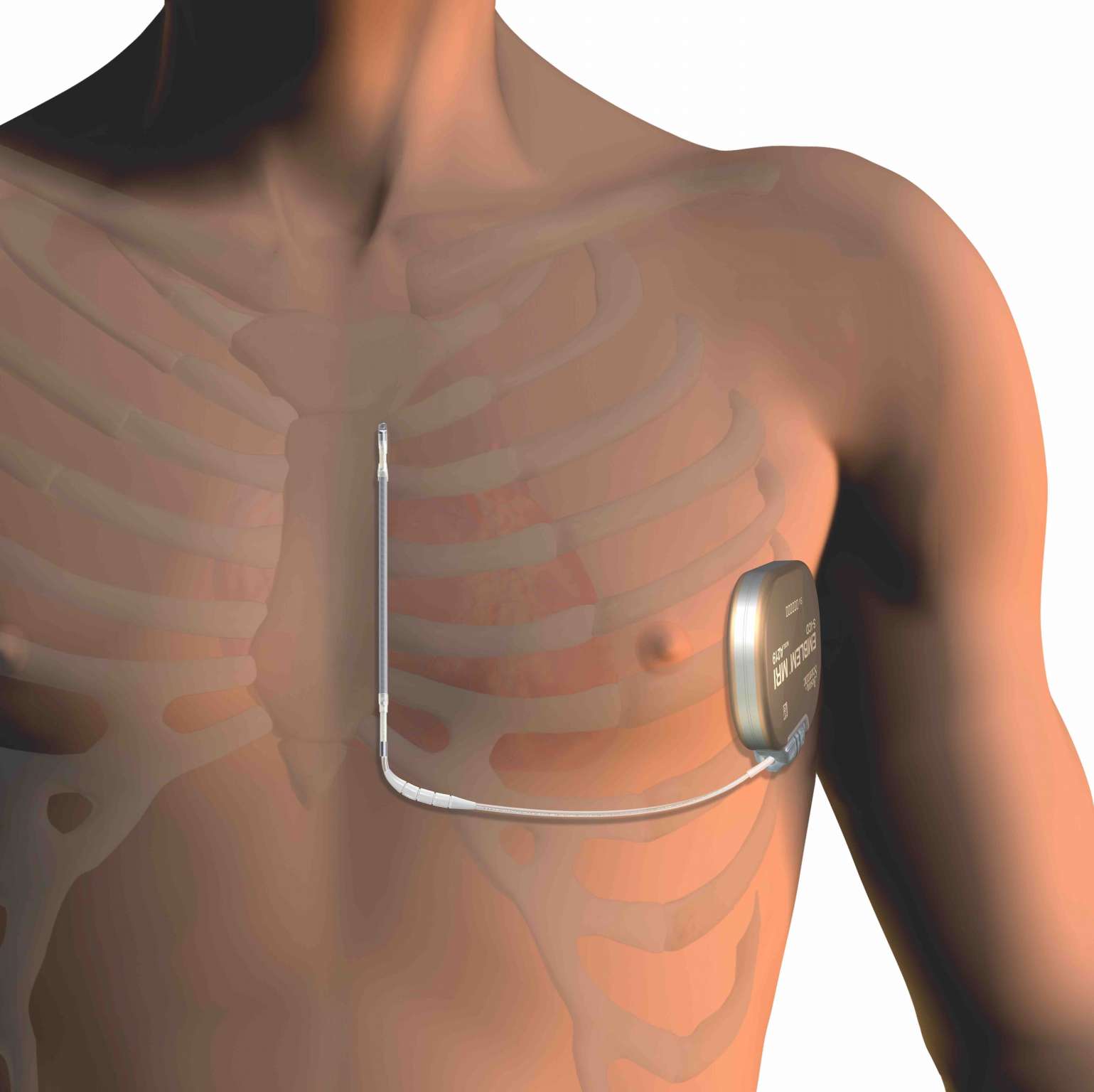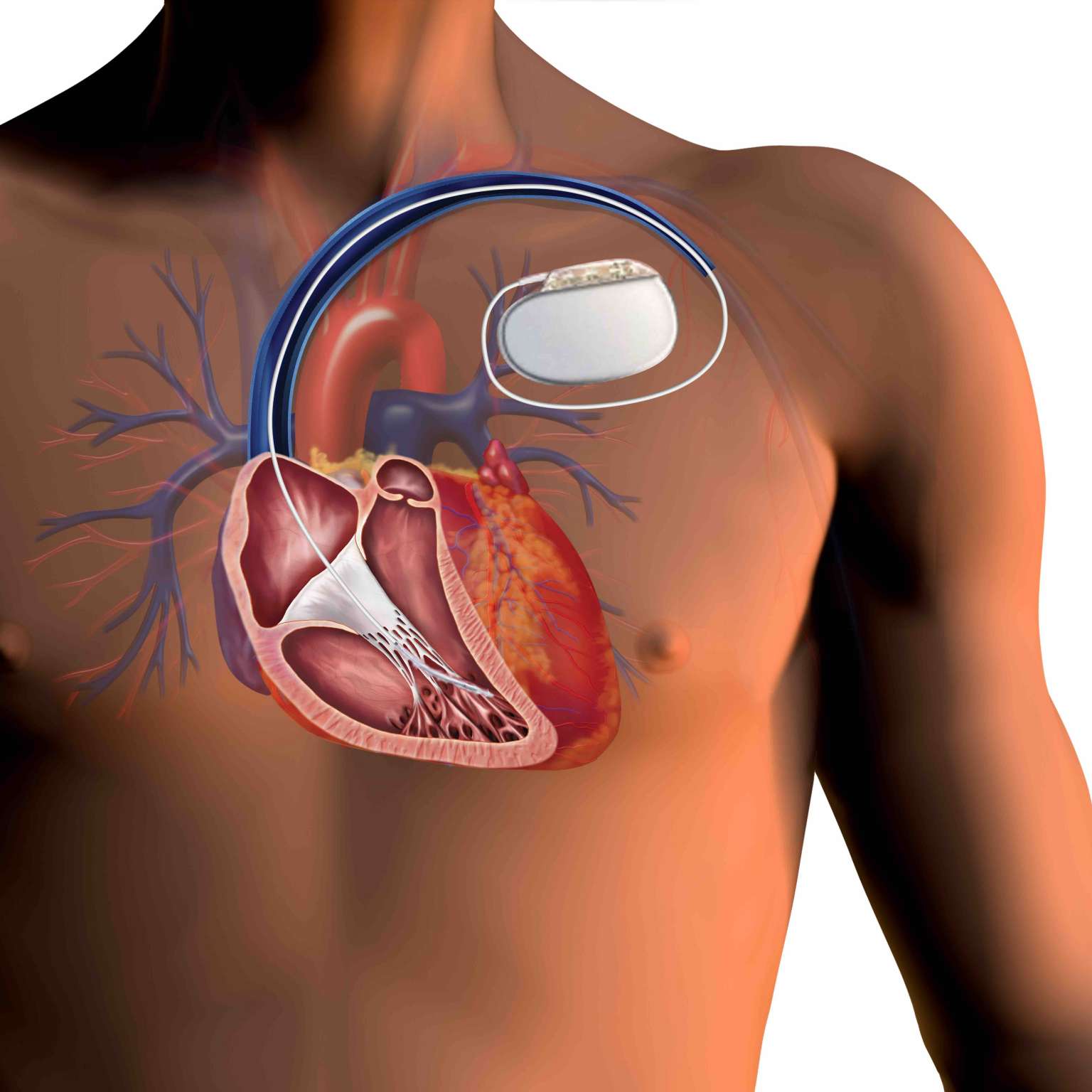Ventricular tachycardia is an arrhythmia that originates from the ventricles. It occurs in healthy people, but can also be a sign of heart disease requiring treatment. Similar to a pacemaker, a battery is placed under the skin and a probe is placed in the heart (AICD) or on the chest (S-ICD). A controlled electric shock is then triggered between the battery and the probe, which corrects the cardiac arrhythmia.
Do you have a finding and would like a second opinion or are you not sure whether you need a defibrillator? One of our specialists will be happy to take the time in a consultation session.
Sudden Cardiac Death
When high-performance athletes collapse in front of the spectators, resuscitation is the immediate measure that should be taken. The use of an automated external defibrillator (AED) is then employed. These devices are connected to the patient by two adhesive electrodes and allow the device to automatically analyse the patient's ECG and deliver an automatic shock of energy. These 200 joules then lead to a resumption of controlled cardiac activity in most cases. In recent years, the devices have become smaller and can be implanted in certain patients. This is a minor surgical procedure.
Single chamber
The focus here is on the detection and treatment of the potentially life-threatening arrhythmia. An ICD electrode is implanted in the right ventricle.
Dual chamber
An additional pacemaker probe is placed in the right atrium. In addition to preventing rapid arrhythmias, this also enables physiological pacing as with a dual-chamber pacemaker.
Triple chamber (CRT-D)
This system is used adequately to a three-chamber pacemaker in patients with desynchronised contraction of right and left ventricles and an increased risk of malignant arrhythmias.
Sub-cutaneous (S-ICD)
S-ICD is a system that does not require probes in the heart. These devices are mainly used for the prophylaxis of life-threatening cardiac arrhythmias. Chronic pacemaker stimulation is not possible with this type of device.
Who needs an ICD
Heart failure in coronary heart disease - especially after heart attack. Cardiac muscle diseases with heart failure (dilated and hypertrophic cardiomyopathy) Genetic heart diseases with increased risk of sudden cardiac death (Brugada syndrome, long or short QT syndrome) Preparation, implantation and follow-up are similar to those of pacemaker implantation. The risks associated with the minor surgery are also similar.


